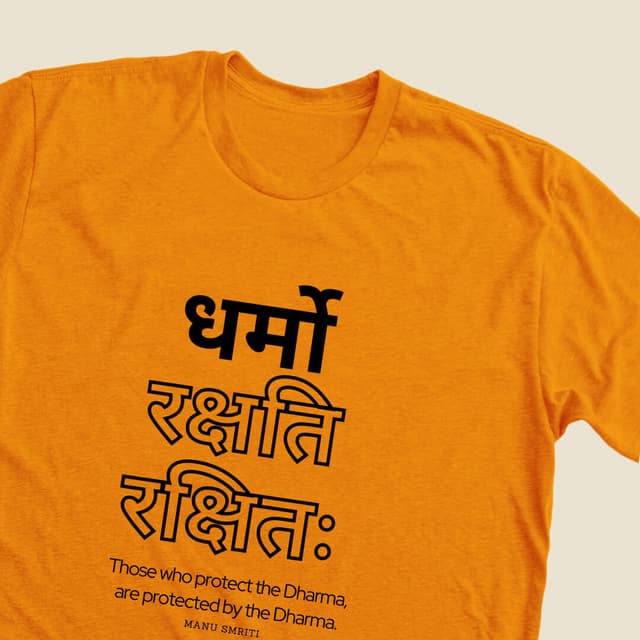
Hanuman
He is also mentioned in the Mahabharata, as well as in some Puranas and Jain texts. He has been described as an incarnation of Indra, Vayu, and Shiva, among other things. People from all walks of life admire and worship him for his strength, humility, and valor.
As a Lord Rama devotee, he became well-known for his devotion and great qualities. He, like Ganesha, commands respect and veneration from both children and elders.
Anyone familiar with the Ramayana cannot help but admire his divine nature and superhuman personality, shaped by celibacy, humility, selflessness, unrivaled devotion, determination, fearlessness, and an extraordinary commitment to working for the divine.
Sita discovered in him a friend, a son, and a devoted servant. She blessed him to remain immortal in his current form until the end of creation and help Rama’s loyal devotees because she was impressed by his loyalty and commitment to the cause of Rama.
People believe that he is still active on Earth today. Anjaneya said to go wherever the name Rama is uttered or chanted and become an invisible part of the scene.
People pray to him for courage and confidence, as well as relief from sorrow and protection from evil spirits and bad luck. Evil forces are terrified of Hanuman. They are terrified of appearing anywhere near him because of his intense purity and devotion.
Etymology
The word Hanuman has two interpretations. Hanu means disfigured, and man means jaw, according to one. Hanuman burned his mouth as a child while attempting to swallow the sun. Hanuman is his name because he has a swollen mouth.
Another interpretation translates Han as destroyed and man as pride. Hanuman is appropriately named because he personifies humility and total lack of pride.
Names of Hanuman
Hanuman is also known by many other names. Anjaneya, Pavanasuta, Bhajarang Bali, Kapisa, Maruti, Manojavam, Mrutatulyavegam, Jitendriyam, Buddhimatmvarishtham, Vttmajam, Vnarayuthamukhyam are some of his most popular names. Shreermdutam, Atulit Bal Dhmam, Hemshailbh Deham, Danujvan Krushanum Gyninm Agraganyam, Sakal Gun Nidhnam, Raghupati Priya Bhaktam, Sankat Mochan, Phalguna Sakha Laxmana Prandata, Dasagriv Darpaha, Dasagriv Darpaha, and others.
Each of them represents one of his characteristics or information about his birth. Anjana gave birth to him. As a result, he is Anjaneya. He is Vayu’s son or an incarnation of Vayu. As a result, he is known as Vayuputra or Pavanasuta. He has powerful limbs and a diamond-like body. As a result, he is known as Bhajarang Bali.
Hanuman is known by many different names. When he is happy, he is known as Prasannanjaneya. When he is ferocious, he is known as Veeranjaneya. When he is meditating, he is known as Dhayananjaney, and when he is absorbed in devotion, he is known as Bhaktanjaneya.
He is known as Kesarinandana, despite the fact that he was not actually Kesari’s son because he was raised by his stepfather. He is known as Ramaduta because he served as Rama’s messenger to deliver a message to Sita.
He is known as Baladhama for his prowess, jnanagunasagara for his pure qualities, and bhajarangi for his strength and devotion. There are a few more names.
Hanuman worship
Hanuman is worshipped in temples and households, both ritually and through pooja ceremonies, according to Smarta traditions. He is also spiritually worshipped through bhajans, meditation, and chanting of his names. As a mark of respect for him, millions fast on Tuesdays and abstain from drinking and smoking. When people pray to Hanuman, they usually chant the Hanuman Chalisa, asking for his assistance and protection. The significance of Chalisa is discussed in the following section. Hanuman Jayanti, a popular Hanuman festival, is celebrated on various dates throughout India to commemorate his birth.
It is celebrated on the full moon day in the Hindu calendar month of Chaitra in Maharashtra and Karnataka, in Tamilnadu and Kerala in December, and in Odisha in April.
Appearance and imagery
Hanuman appears to be a well-built monkey with the strength of a gorilla. Despite his monkey features, his gait is very human, and he conducts himself admirably, without the clumsy movements of an ape. He is a physically half human and half monkey. He was most likely descended from an extinct race. Hanuman lives on in people’s hearts as a result of his exemplary devotion and surrender to God. He possesses limitless physical abilities. As the son of Vayu, the wind god, he has the ability to change his size at will, as well as fly into the air and travel to distant regions of the earth and solar system.
Hanuman is typically depicted in Rama imagery standing reverently on a side, sitting or standing in a humble manner with his hands joined in reverence. When he is shown alone, he can be seen sitting cross-legged, kneeling, standing, or flying. In every case, he is holding his weapon, the mace. When he is shown flying through the air like Superman, he is holding a mountain in one hand and the mace in the other. We see very tall and imposing images of Hanuman in some temples, reminding us of his immense strength.
The images below are some of the most commonly associated with Hanuman.
Images of Hanuman as a child flying towards the sun Hanuman crosses the oceans in search of Sita Hanuman sitting on a pyramid made of his own tail Hanuman meeting Sita under the Asoka tree In his own court, Hanuman is confronting Ravana. Hanuman sets fire to Lanka Hanuman transporting Sanjivani Mountain Hanuman on his shoulders, Rama and Laksmana Hanuman in Rama’s court during the coronation ceremony Hanuman immersed in devotion Hanuman opens his heart and shows Rama and Sita Hanuman adorning the Pandavas’ ceremonial flag as an emblem in the Kurukshetra war.
Associated history
Hanuman is mentioned in both the Ramayana and the Mahabharata, as well as several Puranas and some Jain texts. He is regarded as a living deity, still active in earth consciousness. He was born to Anjana and Vayu, according to the Puranas. Vayu is a Vedic deity mentioned in several hymns and worshipped alongside Indra, Varuna, and Agni.
Anjana was originally a celestial nymph, according to legend. She was extremely attractive and agile. She was cursed to become a monkey and live on Earth due to some unfortunate circumstances. She married a monkey named Kasturi and lived with him for a while. She then made contact with Vayu. Hanuman was given to her by Vayu.
Hanuman gained notoriety as a child for his various acts of mischief, which some consider being fruit. He terrified the demon Rahu by shocking him awake. He was badly injured in a fight with Indra. His relationship with Vayu saved him from further peril. Vayu took him to Kailasa and left him in the care of Lord Siva to calm his temper.
Siva blessed him and bestowed upon him divine powers and a divine mind. Nandi, Siva’s vehicle and humble servant, taught Hanuman all the Vedas and scriptural knowledge, as well as the virtues of humility and egolessness.
We understand that because of these characteristics, Hanuman does not remember his true powers and will not act unless someone reminds him, as he did before flying into the air to find Sita.
Sugriva appointed him as his minister, knowing his abilities and dexterity. Hanuman saw Rama for the first time when he arrived in Kishkindha in search of his estranged wife Sita. That was a historic occasion.
It forever altered his life and the course of the Ramayana. Hanuman realized his true master in that one moment and surrendered to him with his heart and soul. Rama was never far from his mind after that.
In the epic Mahabharata, he also played his dutiful role for the sake of dharma. He taught his stepbrother Bhima a few lessons in humility and agreed to appear as an emblem on the Pandavas’ flag to boost their morale in their fight against evil.



